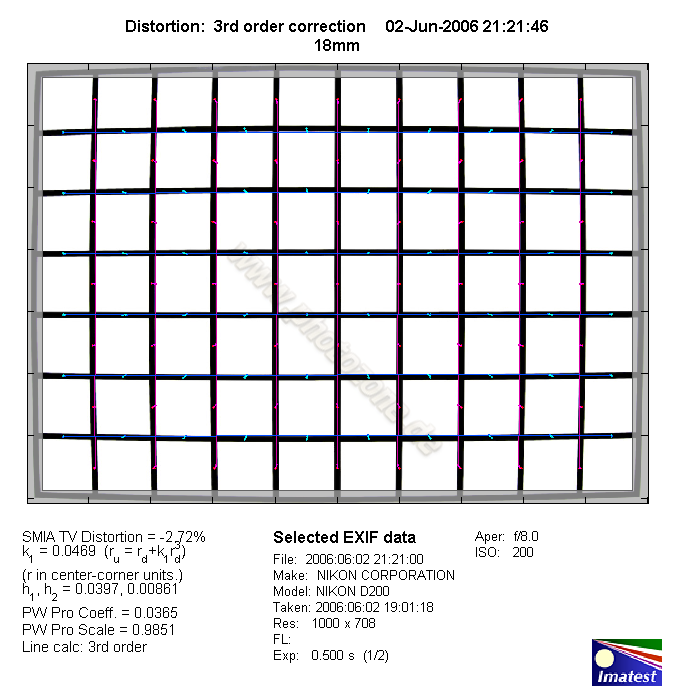|
Nikkor AF-S 18-55mm f/3.5-5.6 G ED DX - Review / Test Report - Analysis |
|
Lens Reviews -
Nikon / Nikkor (APS-C)
|
|
Page 2 of 3
Distortion
The AF-S 18-55mm shows the quite typical distortion characteristic for a lens in
this class. At 18mm there is very pronounced barrel distortion which eases
continuously towards the long end of the zoom range. At 55mm the lens is
basically free of distortion.
|
Move the mouse cursor over the focal length text marks below to observe the respective distortions
|
| 18mm |
24mm |
35mm |
55mm |
|

|
The chart above has a real-world size of about 120x80cm.
Vignetting
As mentioned the AF-S 18-55mm DX is a reduced image circle lens (APS-C) and typical for
such lenses vignetting is somewhat more pronounced compared to classic full frame lenses.
As to be expected the problem is most significant at 18mm @ f/3.5 where the
vignetting exceeds 1.2EV at the image borders. However, this is only a local
issue which is a much lesser problem at other focal lengths and at 18mm
it can easily be resolved by stopping down a little. All-in-all the issue
is pretty well under control for a DX-type lens.

MTF (resolution)
The Nikkor AF-S 18-55mm DX produced surprisingly good resolution figures under
lab conditions which is quite unusual for a lens in this price class. The
center resolution is very good throughout the zoom range. The border quality
at the wide-end is a different story with rather soft results at max. aperture.
However, stopping down to f/5.6 already improves the borders significantly.
At 35mm and 55mm the resolution characteristic is more even across the frame.
While this may sounds quite positive the contrast performance isn't quite up to these
levels. Specifically at 18mm you should avoid large apertures because the poor
contrast resulting in dull colors - have a look at the two 18mm sample
shots below.
Please note that the MTF results are not directly comparable across the different systems!
Below is a simplified summary of the formal findings. The chart shows line widths per picture height (LW/PH) which can be taken as a measure for sharpness.
If you want to know more about the MTF50 figures you may check out the corresponding Imatest Explanations
Chromatic Aberrations (CAs)
Chromatic aberrations (color shadows at harsh contrast transitions) can be a problem
at and below 35mm. The average CA pixel width at the image borders easily exceeds
1px with a peak at 18mm f/3.5 (1.7px). This will be visible in some situations
unless you correct the issue via an imaging application.

|